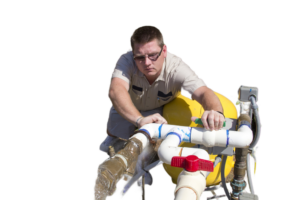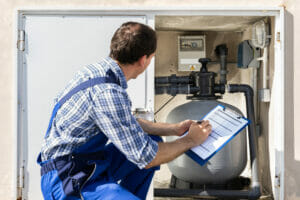We like to share product recommendations with you and hope you like them! Just to make you aware Water Filter Data may collect a small share of sales or other compensation from the links on this page.
When it comes to water storage solutions, bladder tank vs pressure tank are two popular options that serve different purposes. Whether you’re looking to optimize water pressure in your home or business or searching for the best storage system for your water supply, understanding the differences between bladder tanks and pressure tanks is crucial. In this article, we will explore the characteristics, benefits, and ideal applications of bladder tanks and pressure tanks to help you make an informed decision.
1. Bladder Tanks:
Bladder tanks, also known as bladder pressure tanks or diaphragm tanks, are innovative water storage systems that provide a range of benefits. These tanks feature a flexible bladder or diaphragm that separates the water and air compartments. The bladder expands and contracts as water flows in and out, maintaining a consistent pressure within the tank.

Advantages of Bladder Tanks:
a) Water Quality Preservation: The bladder in a bladder tank prevents water from coming into contact with the tank’s interior, reducing the risk of contamination and preserving water quality.
b) Space Efficiency: Bladder tanks have a compact design and can be easily installed in small spaces, making them ideal for residential applications.
c) No Waterlogging: Bladder tanks eliminate the issue of waterlogging, ensuring consistent pressure and improved pump performance.
d) Maintenance and Longevity: These tanks typically require minimal maintenance, and their durable construction ensures a longer lifespan.
Ideal Applications for Bladder Tanks:
a) Residential water supply systems.
b) Small to medium-sized commercial or industrial applications.
c) Agricultural irrigation systems.
d) Off-grid or remote locations with limited space.
2. Pressure Tanks:
Pressure tanks, also referred to as well tanks or captive-air tanks, are widely used to maintain water pressure in various applications. These tanks utilize compressed air to create pressure in the tank, which then pushes the water out when needed.

Advantages of Pressure Tanks:
a) Consistent Water Pressure: Pressure tanks provide a constant water pressure, ensuring a steady flow of water throughout your plumbing system.
b) Energy Efficiency: The compressed air in pressure tanks helps reduce the workload on water pumps, leading to energy savings.
c) Versatility: Pressure tanks can be used with different water sources, including wells, municipal water supplies, and rainwater harvesting systems.
d) Customizable Pressure Settings: These tanks allow you to adjust the pressure settings based on your specific needs, optimizing the water flow.
Ideal Applications for Pressure Tanks:
a) Residential water supply systems, particularly for homes with well water.
b) Commercial or industrial buildings with varying water demands.
c) Irrigation systems requiring consistent water pressure.
d) Systems with high peak water demand.
Choosing between a bladder tank and a pressure tank depends on your specific water storage and pressure needs. Bladder tanks are ideal for preserving water quality, compact spaces, and consistent pressure, making them suitable for residential and smaller-scale applications. On the other hand, pressure tanks offer consistent pressure, energy efficiency, and customizable settings, making them a great choice for well water filters, larger-scale systems, and high-demand scenarios.
Before making a decision on a bladder tank vs pressure tank, consider factors such as water usage patterns, available space, desired pressure levels, and the specific requirements of your water supply system. Consulting with a professional or an expert in the field can provide further guidance tailored to your needs. Ultimately, with a clear understanding of the differences and benefits, you can select the right tank that will optimize your water storage and pressure requirements.



